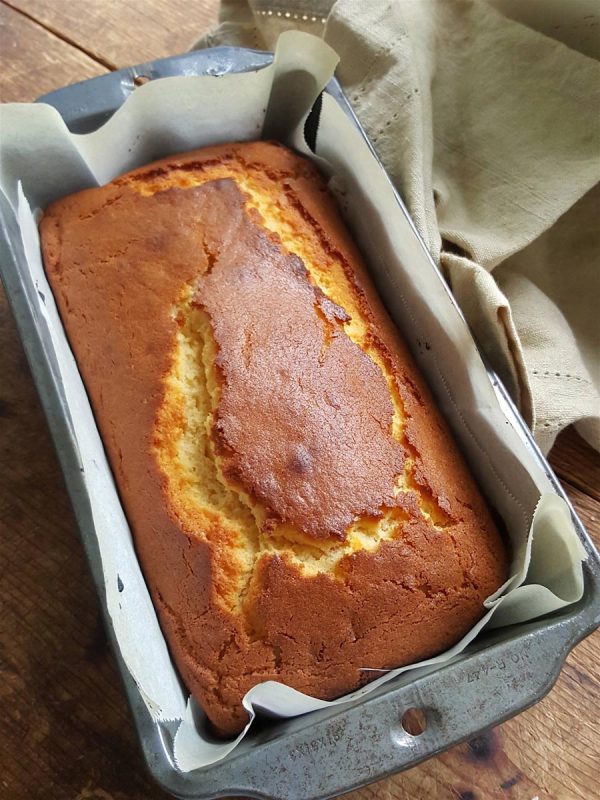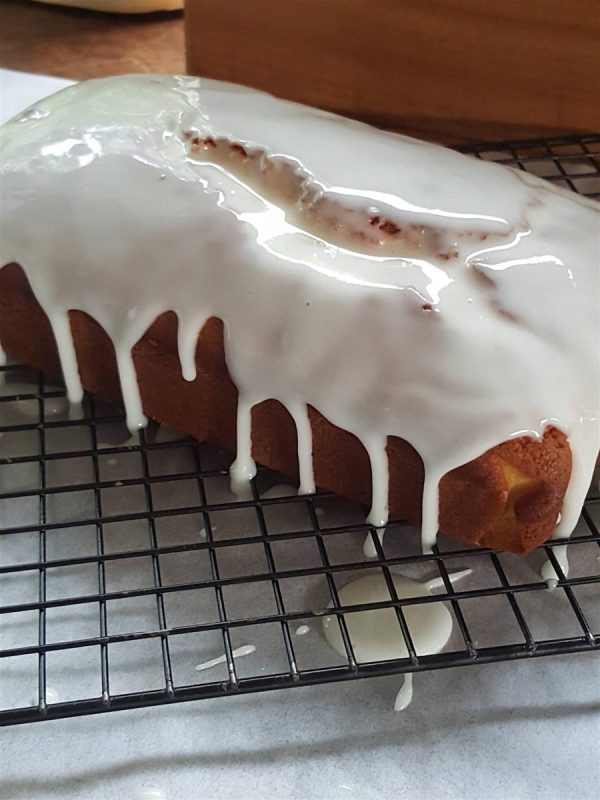Lemon Loaf with Drippy Icing

Introduction
Serves: 15-18 slices
Ingredients
¾ cup caster (superfine granulated) sugar
2 medium (size 6) free-range eggs, at room temperature, lightly beaten together
Finely grated zest 1 lemon
2 cups self-raising flour
Pinch of salt
½ cup milk, slightly warmed
3 Tbsp strained lemon juice
Lemon icing
1 cup icing (confectioner’s) sugar, sifted
1-2 Tbsp strained lemon juice
Method
1 Preheat oven to 180°C (350°F).
Put butter in a bowl and beat with an electric beater until smooth. Gradually whisk in the sugar then continue beating until thick and creamy and lighter in colour. Beat in the eggs a little at a time. Stop machine and mix in lemon zest.
2 Sift over roughly one-third of the flour (add a pinch of salt) and fold in with a large spoon, then add one-third of the milk. Repeat with remaining flour and milk, adding the lemon juice at the end. Spoon into prepared loaf tin (see instructions in Recipe Notes). Bake for approximately 35-40 minutes, until risen, lightly golden and a skewer inserted in the centre comes out clean.
3 Cool loaf in the tin for 15 minutes, then turn out, remove paper and cool on a cake rack.

4 When loaf is completely cool, mix icing sugar with enough lemon juice to form a pouring consistency. Put a sheet of baking (parchment) paper underneath the loaf. Drizzle the loaf with icing, scooping up any that collects on the paper if necessary. Leave until set before cutting into slices with a serrated knife.
Recipe Notes
Tin prep
Choose a loaf tin 23cm (9”) long by 13cm (5”) wide. Line with baking (parchment) paper (put a strip of paper down the length and up the ends, then a second piece in the middle and up the sides).
When creaming butter and sugar for a cake or loaf the butter must be very soft, though not oiled (melted or oily butter makes a cake heavy or greasy). Read the notes here Cake Making
Warming the milk, just so it feels slightly warm to the tip of your little finger, will make it easier to blend in with the other ingredients.
Cook the cake on regular bake, not fan-forced or any other type of accelerated baking programme your oven may have.
